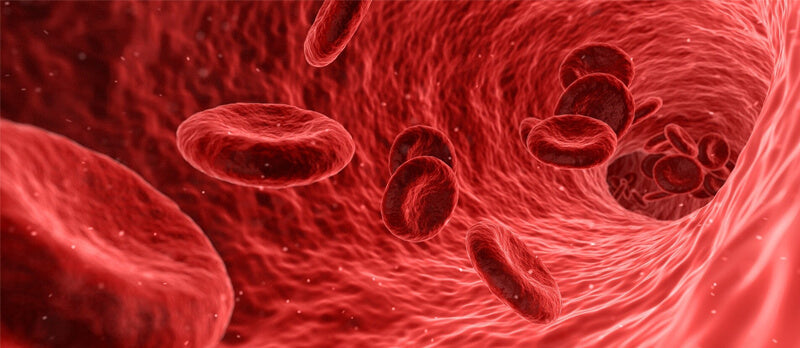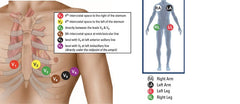What Is the Most Common Cause of Low Blood Oxygen (Hypoxemia)?
Low blood oxygen, also known as hypoxemia, occurs when the amount of oxygen in your blood is lower than normal. This condition can make you feel short of breath, tired, or confused, and if left untreated, it can affect vital organs such as the brain and heart.
The most common cause of low blood oxygen is something called a ventilation-perfusion (V/Q) mismatch — a situation in which the air reaching your lungs (ventilation) does not properly match the blood flow in your lungs (perfusion). When this balance is disrupted, your lungs cannot transfer enough oxygen into your bloodstream, leading to reduced oxygen saturation levels.
Understanding Ventilation-Perfusion (V/Q) Mismatch
Your lungs are designed to bring oxygen into the air sacs (alveoli) while blood flows through nearby capillaries to pick up that oxygen. For healthy oxygen exchange, ventilation and perfusion must be well matched.
When this balance is lost — for example, if a part of the lung receives air but not enough blood, or vice versa — oxygen cannot efficiently move into the blood. This is what doctors refer to as a V/Q mismatch, and it is the most frequent underlying reason for hypoxemia in both acute and chronic respiratory conditions.
Common Conditions That Cause a V/Q Mismatch
1. Lung Diseases
Chronic and acute lung diseases are among the top contributors to low blood oxygen levels. Conditions such as asthma, chronic obstructive pulmonary disease (COPD), and pneumonia can all disrupt normal airflow and gas exchange.
-
Asthma: Airways narrow and become inflamed, reducing the flow of oxygen into the alveoli.
-
COPD: Long-term damage to the airways and alveoli makes it difficult for oxygen to pass into the bloodstream.
-
Pneumonia: Infection leads to fluid buildup and inflammation in the lungs, reducing the surface area available for oxygen exchange.
These diseases interfere with both ventilation and perfusion, leading to persistent or fluctuating hypoxemia.
2. Pulmonary Embolism
A pulmonary embolism (PE) occurs when a blood clot travels to the lungs and blocks one of the pulmonary arteries. This blockage prevents blood from flowing to parts of the lung, creating regions that may be well ventilated but poorly perfused. As a result, oxygen cannot be absorbed effectively, causing sudden drops in oxygen levels.
PE is a serious medical emergency that often presents with chest pain, shortness of breath, and rapid heart rate.
3. Shallow or Slow Breathing
Hypoventilation — breathing too shallowly or too slowly — reduces the total amount of air entering the lungs. Less air means less oxygen available for gas exchange.
Common causes include fatigue, obesity hypoventilation syndrome, or respiratory muscle weakness. In some cases, it can also be triggered by sedative medications that slow the breathing rate.
Other Frequent Causes of Low Blood Oxygen
Although V/Q mismatch is the leading cause, several other conditions and environmental factors can also lead to reduced oxygen saturation.
4. High Altitudes
At higher elevations, the air contains less oxygen per breath. Even if your lungs are healthy, the reduced atmospheric oxygen can lower blood oxygen levels. People who travel to or live at high altitudes may experience altitude sickness, characterized by headaches, fatigue, and low oxygen saturation.
5. Sleep Apnea
During sleep apnea, breathing repeatedly stops or becomes shallow due to airway obstruction or brain signal issues. Each pause limits oxygen intake, causing repeated drops in blood oxygen throughout the night. Over time, this can contribute to chronic hypoxemia, heart strain, and daytime fatigue.
6. Congenital or Structural Heart Defects
Certain heart conditions, especially those present from birth, can cause oxygen-poor blood to circulate through the body without first passing through the lungs. These structural abnormalities reduce oxygenation and can lead to cyanosis (bluish discoloration of the skin) if untreated.
7. Medication-Induced Hypoventilation
Some medications suppress the respiratory system, reducing breathing depth and rate. Opioids, benzodiazepines, sedatives, and alcohol are the most common culprits. They slow down the brain’s respiratory drive, meaning less air — and therefore less oxygen — enters the lungs.
This type of hypoxemia can become life-threatening if the medications are combined or taken in high doses.
How to Recognize Low Blood Oxygen Levels
Symptoms of hypoxemia may vary, but common signs include:
-
Shortness of breath, even at rest
-
Rapid breathing or heart rate
-
Bluish lips, fingers, or toes
-
Fatigue, dizziness, or confusion
-
Headache or chest tightness
If you use a pulse oximeter, readings below 90–92% typically indicate that your blood oxygen level is lower than normal and should be evaluated by a healthcare provider.
Summary
The most common cause of low blood oxygen is a ventilation-perfusion mismatch, most often due to lung diseases such as COPD, asthma, or pneumonia. Other contributing factors include pulmonary embolism, shallow breathing, high altitude exposure, sleep apnea, heart defects, and certain medications that slow breathing.
Recognizing these causes early and seeking medical care can help restore healthy oxygen levels and prevent complications.


















